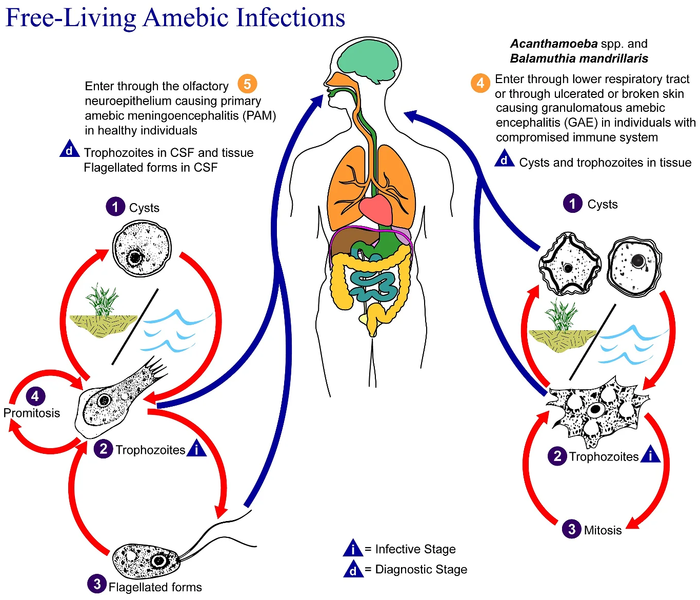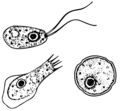Mynd:Free-living amebic infections.png

Stærð þessarar forskoðunar: 700 × 600 mynddílar Aðrar upplausnir: 280 × 240 mynddílar | 560 × 480 mynddílar | 896 × 768 mynddílar | 1.195 × 1.024 mynddílar | 1.365 × 1.170 mynddílar.
Upphafleg skrá (1.365 × 1.170 mynddílar, skráarstærð: 715 KB, MIME-gerð: image/png)
Breytingaskrá skjals
Smelltu á dagsetningu eða tímasetningu til að sjá hvernig hún leit þá út.
| Dagsetning/Tími | Smámynd | Víddir | Notandi | Athugasemd | |
|---|---|---|---|---|---|
| núverandi | 2. febrúar 2023 kl. 09:24 |  | 1.365 × 1.170 (715 KB) | Materialscientist | https://answersingenesis.org/biology/microbiology/the-genesis-of-brain-eating-amoeba/ |
| 20. júlí 2008 kl. 06:30 |  | 518 × 435 (31 KB) | Optigan13 | {{Information |Description={{en|This is an illustration of the life cycle of the parasitic agents responsible for causing “free-living” amebic infections. For a complete description of the life cycle of these parasites, select the link below the image |
Skráartenglar
Eftirfarandi síða notar þessa skrá:
Altæk notkun skráar
Eftirfarandi wikar nota einnig þessa skrá:
- Notkun á de.wikibooks.org
- Notkun á en.wiktionary.org
- Notkun á fi.wikipedia.org
- Notkun á fr.wikipedia.org
- Notkun á gl.wikipedia.org
- Notkun á hr.wikipedia.org
- Notkun á it.wikipedia.org
- Notkun á pl.wikipedia.org
- Notkun á te.wikipedia.org
- Notkun á vi.wikipedia.org
- Notkun á www.wikidata.org
- Notkun á zh.wikipedia.org




